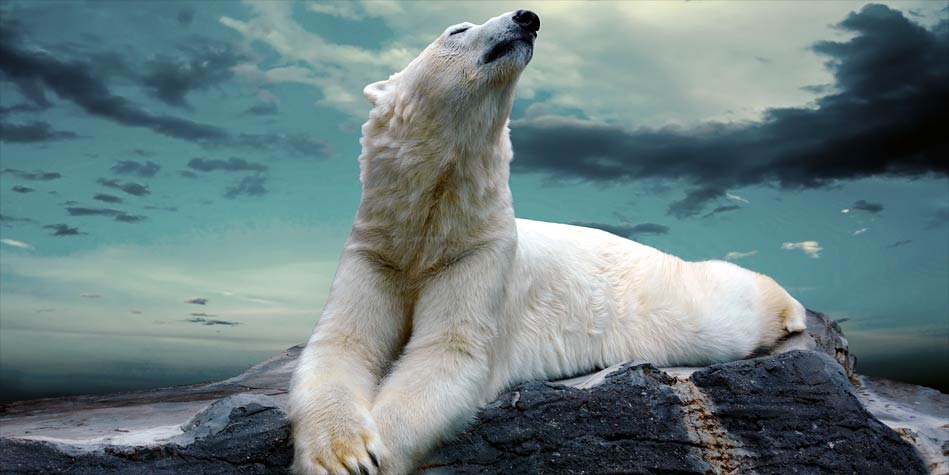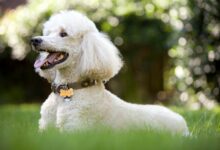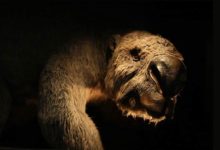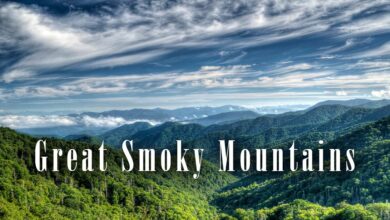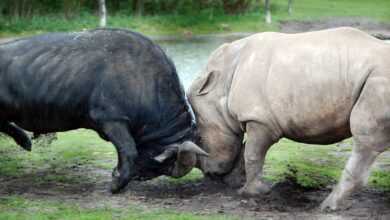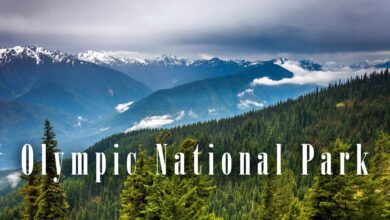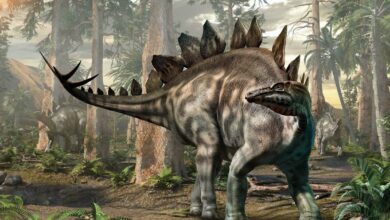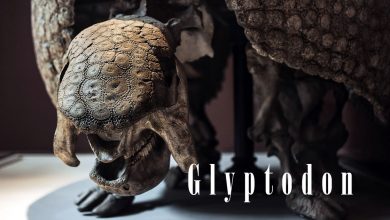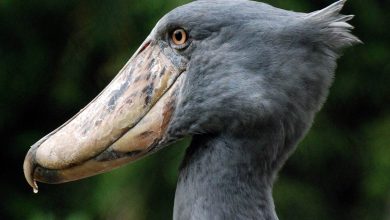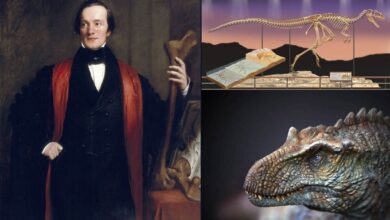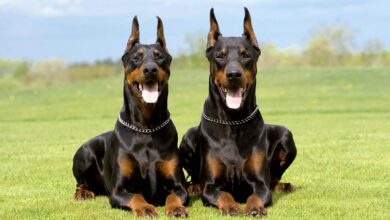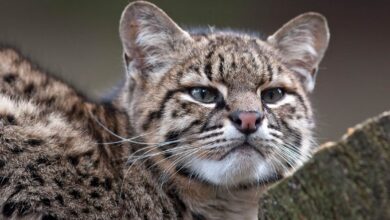Polar bear, white bear (Ursus maritimus)
The polar bear is the largest species of bear. Even the mighty North American grizzlies or Kodiak bears give way to it. It is the apex predator within its range. Thick fur and a layer of fat protect it from the cold. The hair forming the bear coat is translucent; the coat as a whole is generally white or creamy in color, thus allowing the animal to camouflage well. The polar bear has a short tail and small ears, which helps reduce heat loss. Its relatively small head and long, narrowing back body give it a streamlined shape for swimming. It is an almost marine mammal that needs only a piece of floating ice and food found in the water to survive, as well as a place to give birth to and keep young bears.
Classification
Polar bears (Ursus maritimus) are classified in the family Ursidae and the order Carnivora. They are closely related to other bear species, such as brown bears (Ursus arctos), black bears (Ursus americanus), and sun bears (Helarctos malayanus).
- Kingdom: Animalia
- Phylum: Chordata
- Class: Mammalia
- Order: Carnivora
- Family: Ursidae
- Genus: Ursus
- Species: Ursus maritimus
The scientific name “Ursus maritimus” means “sea bear,” which is fitting given that polar bears are adapted to living in marine environments. The species name “maritimus” is Latin for “maritime,” or “of the sea.”

Occurrence
The polar bears live in the Arctic, Greenland and the northern regions of North America and Asia. They are most likely to stay in areas connecting ice with open waters. These animals are well suited to live in the Arctic ice environment – their white-yellow fur is very thick and long, providing excellent protection against the cold.
Habitat
Polar bears are found in the Arctic Circle and surrounding areas, including Russia, the United States (Alaska), Canada, and Greenland. They inhabit areas where the sea is ice-covered for most of the year, and they rely on the sea ice for hunting, breeding, and denning.
Polar bears are adapted to living in cold environments and are able to survive extreme temperatures that can reach as low as -40°C (-40°F). They have a number of physical adaptations that allow them to survive in these conditions, including a thick layer of blubber under their skin, a dense coat of fur, large paws covered in fur, and a keen sense of smell.
Polar bears prefer to live in areas with sea ice, as this is where they can find their primary food source, seals. However, they are also found on land and may travel long distances overland in search of food or mates.
The melting of sea ice in the Arctic due to global warming is a major threat to polar bear habitats and populations. As the sea ice retreats, polar bears are forced to spend more time on land, which can lead to conflicts with humans and may impact their ability to find food and reproduce.
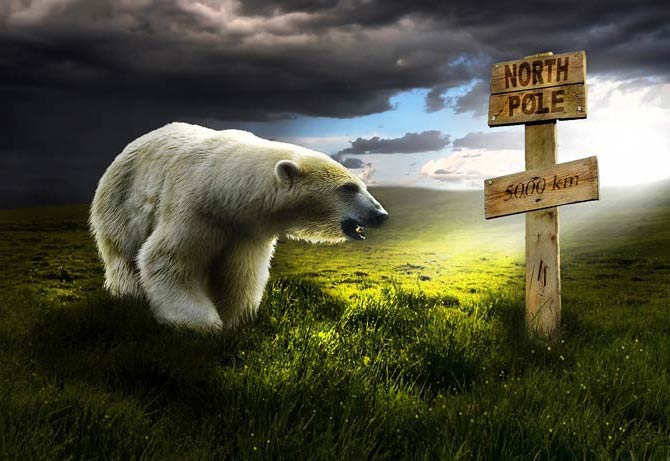
Characteristics
Polar bears are large carnivorous mammals that are adapted to living in cold environments. They are the largest species of bear, and males can grow up to 2.5 meters (8 feet) in length and weigh up to 700 kilograms (1,500 pounds). Female polar bears are smaller, typically weighing between 200 and 350 kilograms (450 to 770 pounds).
Polar bears have a number of physical characteristics that help them to survive in the cold Arctic environment. Some of these characteristics include:
- A thick layer of blubber under their skin that helps to insulate their bodies and keep them warm
- A dense coat of fur, with each individual hair being transparent and hollow, which helps to trap heat and keep the bear warm
- Large paws that are covered in fur and that act as snowshoes, allowing them to walk on top of the snow and ice
- A keen sense of smell that helps them to locate prey, even when it is buried beneath the snow or ice
- A small head and ears, which helps to minimize heat loss
- A short, round nose, which helps to warm the cold air before it reaches the lungs
In addition to these physical characteristics, polar bears are also known for their powerful bodies and large front claws, which they use for hunting and climbing on ice. They are skilled swimmers and are able to swim long distances through the water, even in rough seas.
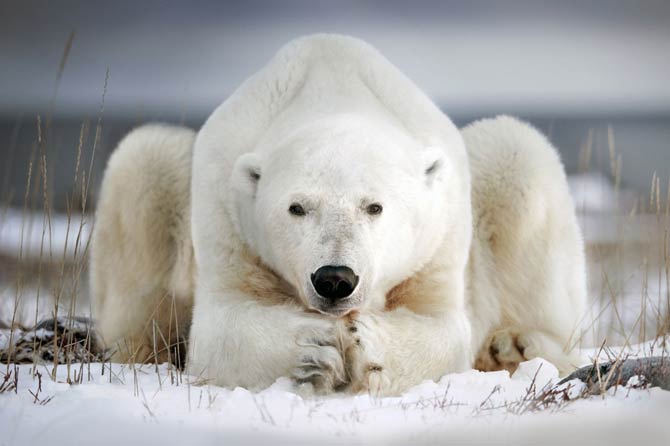
Reproduction and lifecycle
Polar bears are solitary animals, and males and females only come together to breed. Mating typically occurs in April or May, and females give birth to their cubs about eight months later, in December or January.
Females give birth to one to three cubs at a time, and the cubs are born blind and weigh only about 500 grams (1 pound). They rely on their mother’s milk for nutrition and protection, and they remain with their mother for the first two to three years of their lives. During this time, the cubs learn important skills, such as how to hunt and how to survive in their harsh environment.
After the cubs are born, the mother and cubs retreat to a den, where the cubs are kept warm and protected from the cold and predators. The mother does not eat during this time and relies on her stored fat to survive.
Once the cubs are old enough, they leave the den and begin to explore their surroundings. At this stage, they start to eat solid food, such as fish and seal, and they learn how to hunt.
Polar bears have a lifespan of about 15 to 18 years in the wild, although they have been known to live longer in captivity. They reach sexual maturity at around four to five years of age, at which point they are able to reproduce.
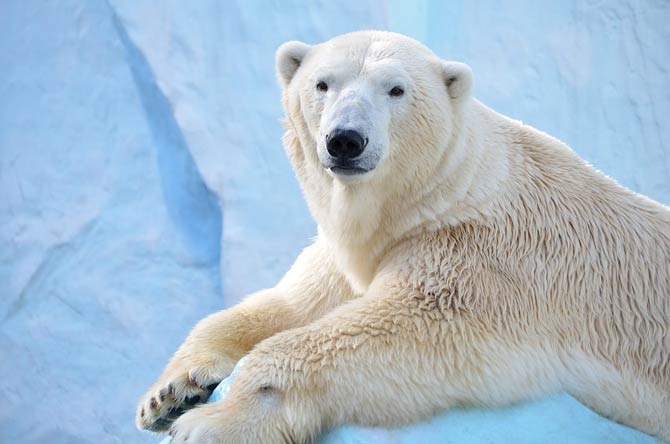
Diet and hunting
Bears are mainly fed on seals. They hunt alone, chatting next to gaps through which seals catch the air or steal to animals resting on ice. In such hunts, the polar bear behaves like a cat. As he approaches, he hides behind the ice blocks and then, when he is close enough, with a few long jumps overcomes the last distance from the victim. The polar bears are extremely strong, so they usually kill with a single paw strike.
In summer, polar bears supplement their diet with berries, mosses and other plants available at the time. They also eat carrion, often patrolling the coast for dead animals. They also attack bird colonies and sometimes kill reindeer.
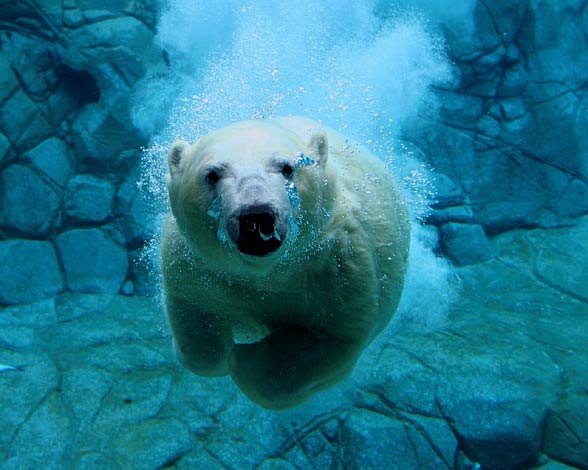
The polar bear is under protection
Hunting for polar bears is currently severely limited. In all countries where these unusual animals are found, there are programs to protect them. However, Eskimos kill a small number of bears every year, mainly due to fur and nutritious meat.
The biggest white bear
The largest bear captured, was a record-breaking large male 1002 kg (2,210 lb), killed in Kotzebue Sound in north-east Alaska in 1960. This bear, standing on two feet, measured 3.39 m (11 ft 1 in).
Population
The polar bear population is estimated to be between 20 000 and 25 000 individuals.
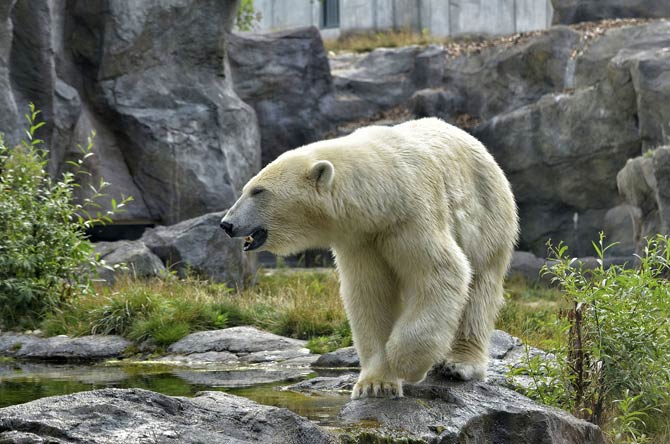
Conservation status, threats
Polar bears (Ursus maritimus) are classified as a vulnerable species on the International Union for Conservation of Nature (IUCN) Red List of Threatened Species. This means that they are at risk of extinction in the wild, although they are not currently considered to be endangered.
There are several threats to polar bear populations, including:
- Habitat loss: The melting of sea ice in the Arctic due to global warming is a major threat to polar bear habitats and populations. As the sea ice retreats, polar bears are forced to spend more time on land, which can lead to conflicts with humans and may impact their ability to find food and reproduce.
- Human activities: Polar bears are at risk of being killed by humans, either intentionally or accidentally, through activities such as hunting and oil and gas exploration. They may also be negatively impacted by pollution and the introduction of invasive species.
- Climate change: Polar bears are highly dependent on sea ice for hunting, breeding, and denning, and the melting of sea ice due to climate change is a major threat to their survival. As the sea ice retreats, polar bears are forced to spend more time on land, which can lead to conflicts with humans and may impact their ability to find food and reproduce.
There are several conservation efforts underway to help protect polar bears and their habitat, including research, habitat protection, and efforts to reduce human-bear conflicts. In addition, international agreements, such as the 1973 Agreement on the Conservation of Polar Bears and the 1992 Convention on Biological Diversity, provide legal protections for polar bears and their habitats.
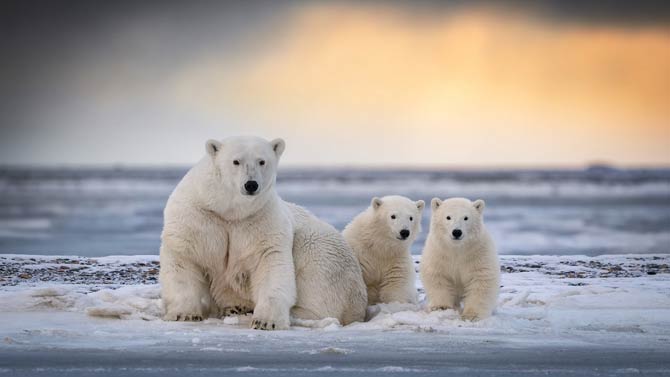
In culture
Polar bears have long been a part of the culture and mythology of the Arctic people, who have lived alongside these majestic animals for thousands of years. In many Indigenous cultures, polar bears are revered as powerful spiritual beings and are often depicted in art and storytelling.
In Western culture, polar bears have also been a popular subject of fascination and have been featured in literature, film, and other media. They are often depicted as symbolizing the beauty and harshness of the Arctic, and they have been used to raise awareness about conservation and climate change.
In recent years, polar bears have gained popularity as a mascot for environmental organizations and have been used in campaigns to raise awareness about the impacts of climate change on the Arctic and its wildlife.
Overall, polar bears have a significant cultural and symbolic importance and are an important part of the natural and cultural history of the Arctic.
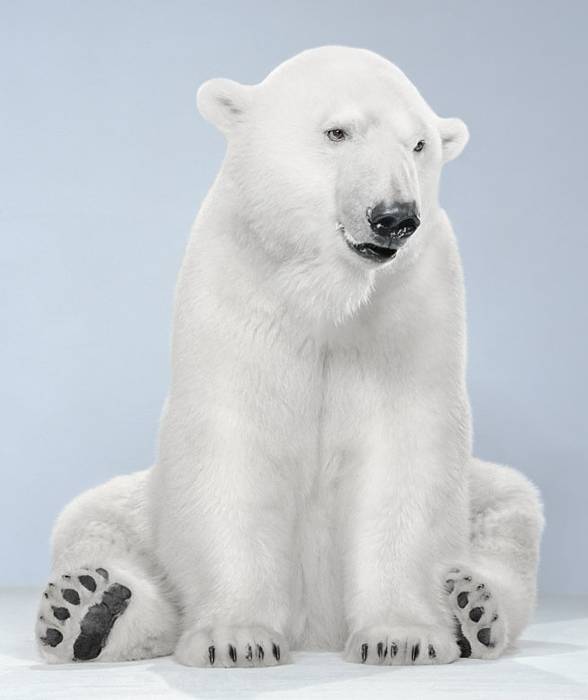
Detailed data / dimensions
Polar bear (Ursus maritimus)
- The majority of adult males weigh from 350–700 kg (772–1,543 lb)
- Length: 2.4–3 meters (7 ft 10 in–9 ft 10 in)
- Height at the withers of a male bear is from 122 to 160 cm (4 ft 0 in to 5 ft 3 in)
- Standing vertically, an adult male can reach a height of 3.39 m (11 ft 1 in)
- The female is usually about two times smaller and weighs between 150–250 kg (331–551 lb), measuring 1.8–2.4 meters (5 ft 11 in–7 ft 10 in) in length.
- Pregnant females can weigh as much as 500 kg (1,102 lb)
- Tail: 7 to 13 cm (2.8 to 5.1 in)
- After birth, the young bear cubs weigh only 600-700 g.
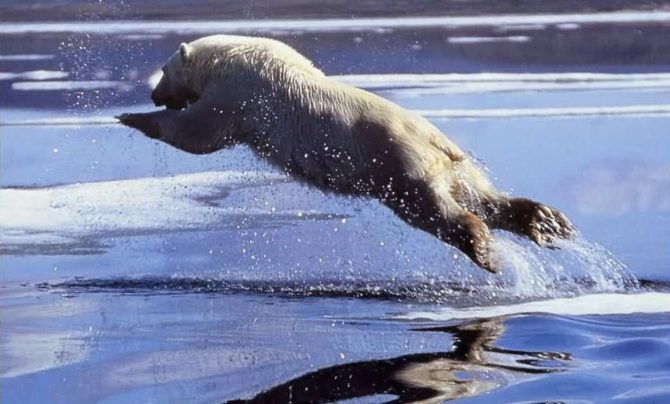
White bear – interesting facts
- The polar bear performs well on smooth and slippery slopes of glaciers. He slides over them on his stomach when it is necessary to restrain his hind legs.
- The polar bear’s milk contains a lot of fat. As a result, bears grow very quickly and almost never freeze.
- These animals are excellent swimmers and divers. Under the surface of the water, they can withstand up to 2 minutes.
- Polar bears have an excellent sense of smell. They can find the seal carrion even under a two-meter layer of ice.
- These animals can run at a speed of 40 km/h (25 mph).
- Young polar bears, just after birth, are no larger than a rat.
- The polar bear’s liver is … poisonous due to the high content of vitamin A.
- The skin of a polar bear is black … (not to be confused with fur, which is white or cream). Black skin absorbs sun rays better, thanks to which bears heat up on sunny days more quickly.
- The polar bear fur becomes yellow with age.
- In captivity, the color of polar bear fur often becomes greenish as a result of the development of algae in fur.
- The largest captured bear was a record large male weighing 1002 kg (2,210 lb).
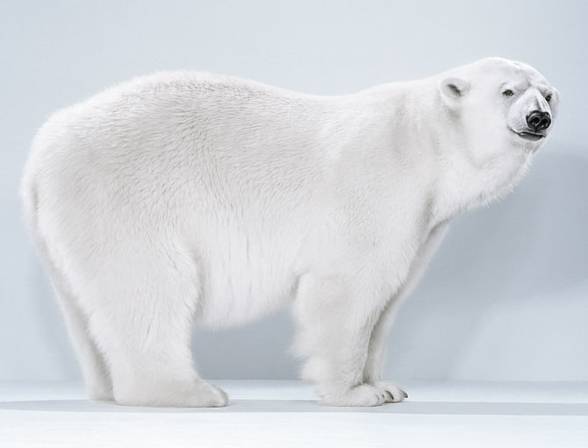
Recommended
- Grizzly
- Kodiak bear
- Fastest animals
- Fastest birds
- Lion vs tiger
- Animal fights
- American lion
- European cave lion
- Smilodon – Saber-toothed tiger
- Big cats
- Black panther
- Leopard
- Snow leopard
- Lions
- Tigers
- White lions
- White tigers
- Bengal tiger
- Sumatran tiger
- Liger
- African Lion

